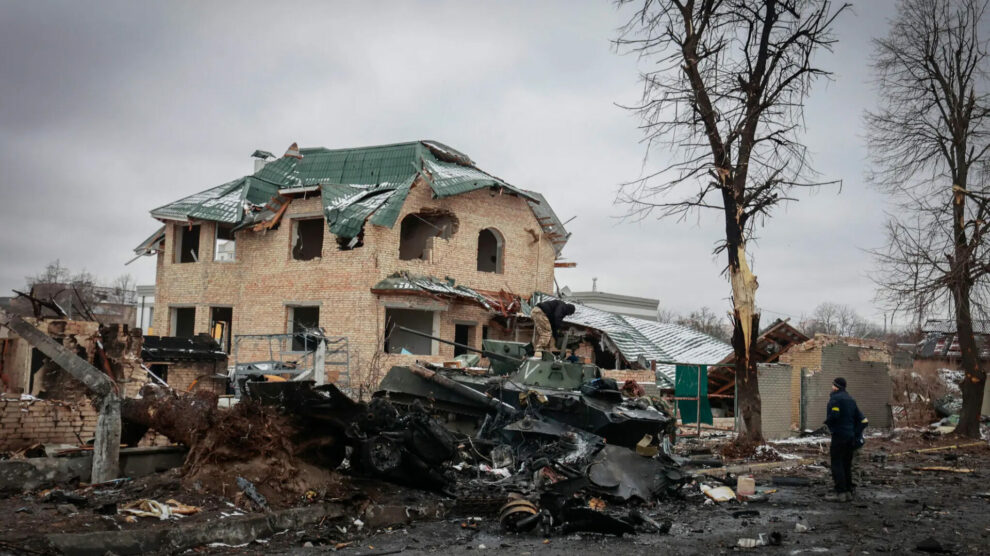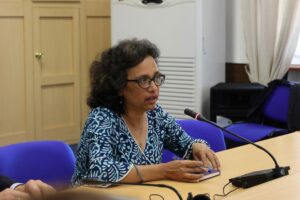Bruno Caloise with AFP Central Asia Correspondents In Almaty, two million people live on 27 tectonic fault lines. The devastating earthquake that struck Turkey and Syria revived in them the fear of one day seeing the largest city in Kazakhstan collapse.
Their fears were reinforced by a 6.8-magnitude earthquake that struck Thursday morning in eastern Tajikistan, at the border with Afghanistan and China.
“We are also in danger,” says Klara Imangaliyeva, a resident of Almaty, which covers most of the Tian Shan mountains.
The forty-year-old woman, who lives on the seventh floor of a building in the city center, adds, “I am looking for a new home. I want to move to a one-story house, so that I have at least a chance of survival in the event of an earthquake.”
Almaty was devastated by three earthquakes at the end of the 19th and early 20th centuries, knowing that large parts of the city were built up when it was part of the Soviet Union.
“Earthquake standards have developed since the end of the 1930s,” recalls Almas Ordabayev, the country’s most famous architect and urban planner.
And he adds that if “the buildings that are being built today are designed to withstand the most devastating earthquakes,” the situation is completely different for the old buildings.
And the man, who will soon be 85 years old, points out that all buildings “built until the late fifties and which were not supported, will not survive an earthquake like the one that struck Turkey.” It is estimated that 10% of Almaty’s buildings fall into this category.
But Ordabaev also points out that no one really knows what will happen to buildings built during the economic and political chaos of the post-Soviet period, in a country ravaged by cronyism.
“Only a strong earthquake will reveal what will happen to the buildings built in the 1990s by corrupt and criminal companies,” he says.
40 thousand shakes
“I hope that the earthquake in Turkey will serve as a lesson for our authorities and construction companies,” he added, referring to the liberties that real estate development companies, especially Turkish ones, may have taken with setting standards related to earthquakes.
And the danger is real. Nursarn Ozbekov, an official at the Almaty Institute of Seismology, explains to AFP that the earth is constantly shaking in southeastern and southern Kazakhstan.
“Nearly 40,000 earthquakes have been recorded in the last five years” in Kazakhstan, and on average, “the population feels 9 to 15 of them every year,” he says.
The institute carefully studies every movement of the earth and even the behavior of animals such as snakes, birds, rabbits and fish.
His colleague Grigory Kochkarov works at a seismological station in the mountains overlooking Almaty. In front of it are screens to monitor the movements of the earth in real time.
He explains, “If there is an earthquake, we see it immediately on the screen, we receive an audio signal and within ten minutes, at most, we transmit the information.”
It opens a heavy door that leads to a 300-meter tunnel where “no one usually enters” and houses highly sensitive measuring instruments, a kind of giant loudspeaker that monitors the movements of the planet.
But the majority of seismographs date back to the Soviet era and are insufficient. The Kazakh government said it wanted to address the matter.
In Central Asian countries that were formerly part of the Soviet Union, residents of other cities also feel the fear of a devastating earthquake.
In Kyrgyzstan, which is dominated by mountains over most of its area, the authorities promised to assess the resistance of buildings.
In Uzbekistan, large parts of the capital, Tashkent, were destroyed in 1966. “I was about 13 years old,” says the retired Nureddin Ibrahimov, “the destruction was covering Tashkent, and the (Soviet) authorities concealed the death toll.”
In Turkmenistan, the capital, Ashgabat, was destroyed in 1948, in a catastrophe that killed an estimated 100,000 people. A government source told AFP that Turkmenistan, which is among the most isolated countries in the world, is taking “the necessary measures to preserve the integrity of building structures.”
In Tajikistan, which witnessed an earthquake on Thursday, Sarez Lake, which was formed as a result of an earthquake in 1911, poses a threat to a quarter of the country’s area, if the natural dam that contains it collapses.
source: globeecho
















